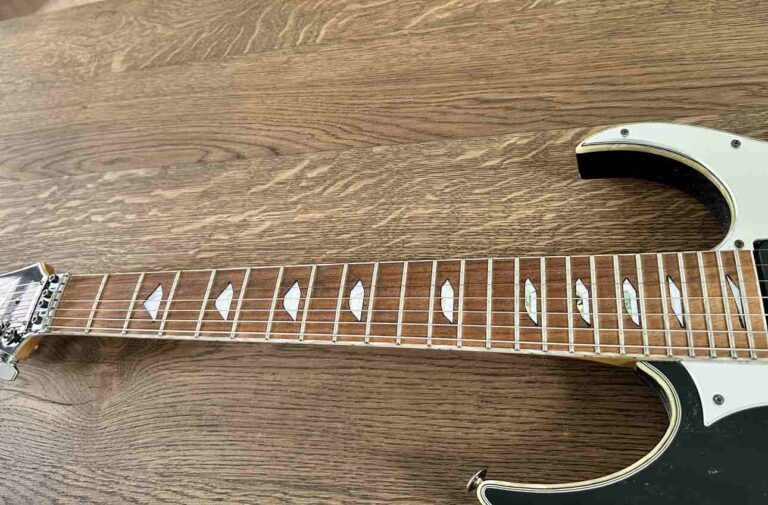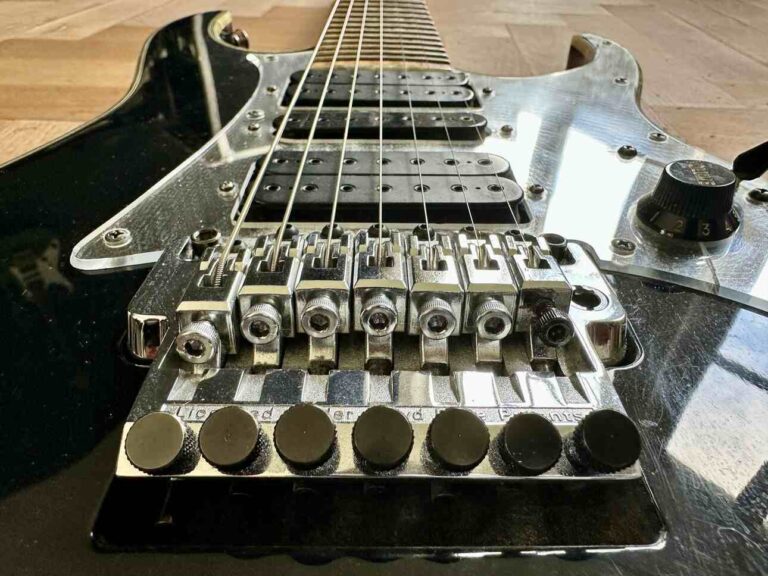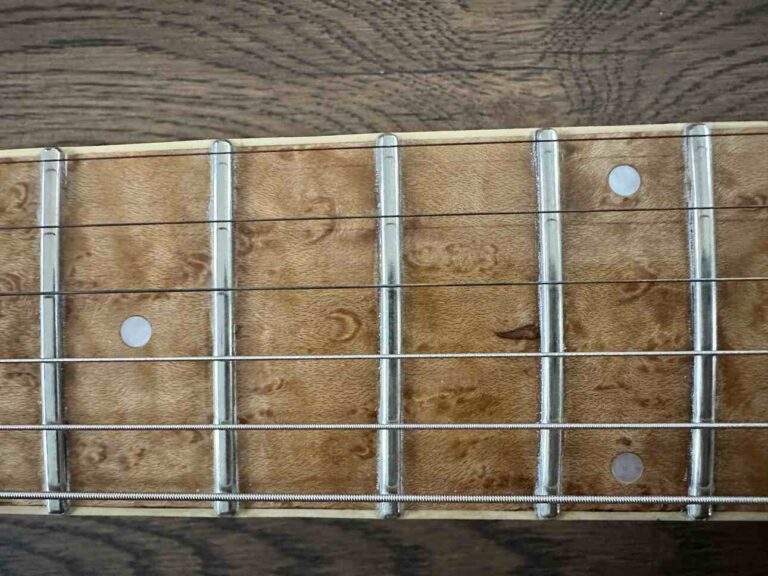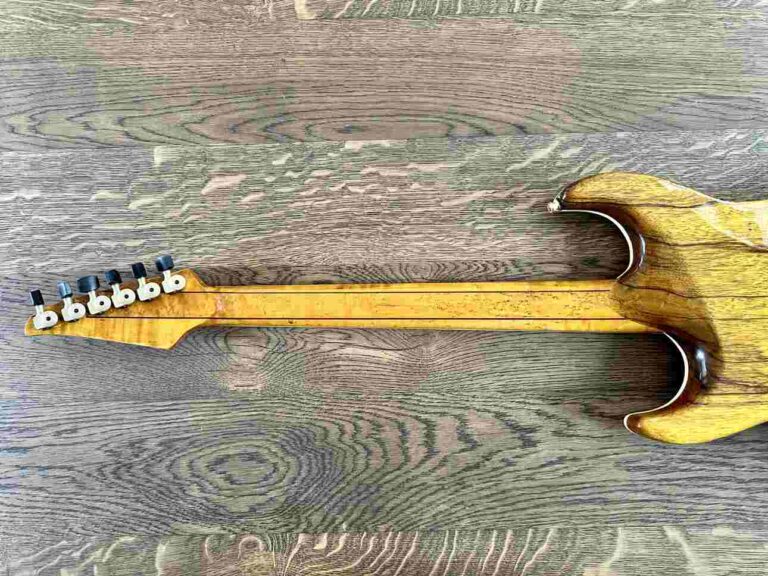What Causes a Guitar Neck to Twist? Warping Explained
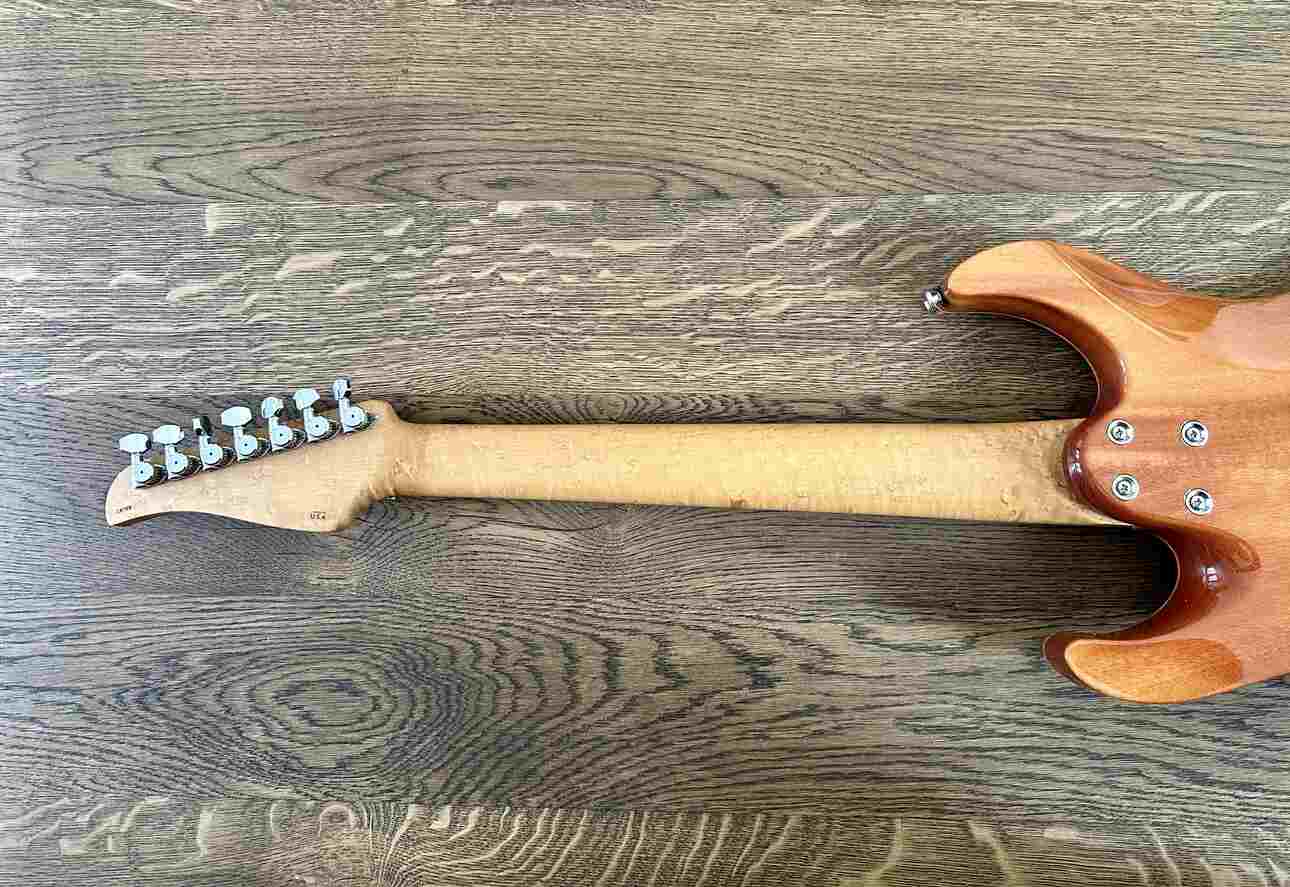
A twisted guitar neck can be a nightmare for any player. Several factors can contribute to this issue. In this post, you’ll read what causes a warped neck and how to fix and prevent it.
One of the top causes of your guitar neck twisting is changes in humidity and temperature. Wood expands and contracts with these changes, sometimes leading to a warped neck.
Poor storage practices can also play a big role. If you leave your guitar leaning against a wall for long periods, the neck may begin to twist over time. And then there are heavy string gauges. They can add stress to the neck, making it susceptible to twisting.
Damage during transport or accidental drops can also cause a twisted neck. Keeping your guitar in a high-quality, sturdy case can help prevent such damage when not in use.
Key Takeaways
- Changes in humidity and temperature can twist a guitar’s neck;
- Improper storage practices, like leaning your guitar against a wall, can damage the neck;
- Poor transport and the use of heavy string gauges can lead to twisting.
Understanding the Guitar Neck
The guitar neck plays a key role in your axe’s playability and tone. To appreciate its importance, it’s essential to grasp how it’s built and maintained.
Anatomy of the Guitar Neck
For novices, the guitar neck includes the fretboard, headstock, and truss rod.
- Fretboard: This is where you press the strings to play notes. It usually has markers to help you find positions;
- Headstock: Located at the end of the neck, it holds the tuning pegs, which you use to tune the strings;
- Truss Rod: A metal rod inside the neck that adjusts the neck’s curvature.
Role and Function of the Truss Rod
The truss rod is a critical element in your guitar’s neck. It’s a metal rod that runs along the inside of the neck.
- Adjusting the Neck: Turning the truss rod adjusts the neck’s bow shape. This can solve issues like string buzzing or high action;
- Prevention of Twists: It helps to keep the neck straight and counteract the tension caused by the strings;
- Types: Some guitars, especially high-end ones, have dual-action truss rods for more precise adjustments.
Proper use and tweaking of the truss rod can greatly improve playability.
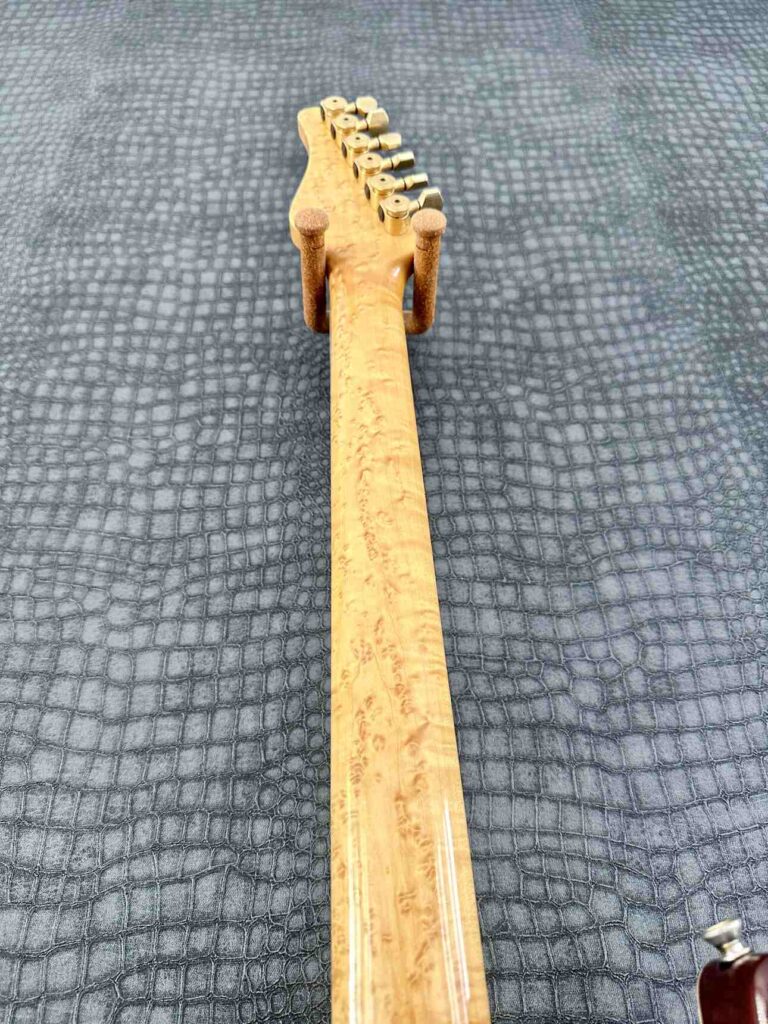
Materials and Construction
Guitar necks are made from various materials, impacting their durability and sound.
- Wood Types: Maple, mahogany, and rosewood are common woods used. Each wood type affects tone and stability.
- Construction Methods:
- Bolt-On Necks: These are attached with bolts and are common in electric guitars. They are easier to replace or adjust but might impact sustain.
- Set Necks: Glued into place, usually found in acoustic guitars, providing better sustain and tone but harder to repair.
- Neck-Through: The neck extends through the body. It provides the best sustain and stability, mainly in high-end guitars.
What Are Signs That Your Guitar Neck Has Twisted?
A twisted guitar neck can be a big problem. Here are some signs to look out for:
Uneven String Height
If you notice that your strings have different heights across the fretboard, this can be a sign of a twisted neck.
Buzzing Strings
Strings that buzz when you play can indicate neck issues. This often happens because the strings are not sitting evenly.
Warped Frets
Look closely at your frets. It could mean your guitar neck is twisted if it appears uneven or warped.
Difficult Tuning
A twisted neck might be the culprit if your guitar goes out of tune quickly or needs more consistent tuning.
One easy check is to sight down the neck from the headstock. If it appears twisted or not straight, then you likely have a problem.
Fret Wear
Unusual or uneven fret wear can also signal a twisted neck. Check for spots where the frets are more worn down on one side than the other.
If your fingers feel uncomfortable when playing compared to how they used to, this might hint at a twist.
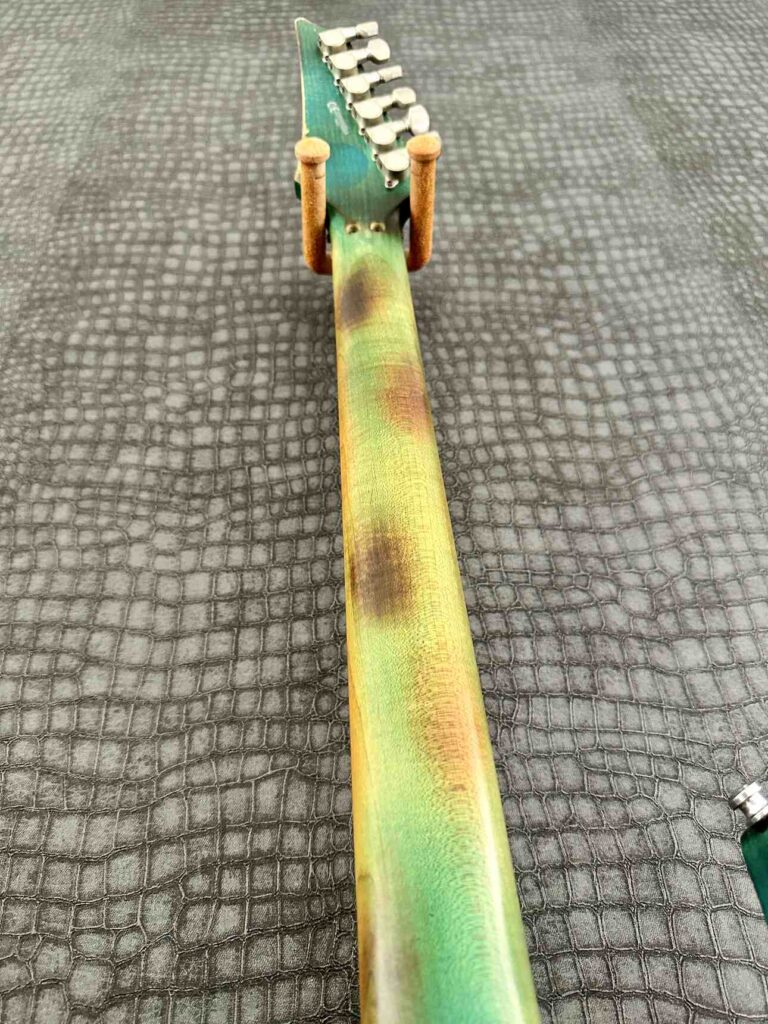
Factors Contributing to Neck Twist
Several key factors can cause a guitar neck to twist, including environmental changes, string tension, and physical damage.
Understanding these can help you prevent issues and maintain your guitar’s playability.
Environmental Influences
Environmental conditions play a significant role in causing a guitar neck to twist. Rapid changes in temperature and humidity can cause the wood to expand or contract. Your guitar may be more susceptible to these changes if you live in an area with frequent climate shifts.
- Dry climates can cause the wood to shrink;
- Humid environments can cause the wood to swell;
- Rapid temperature changes can lead to warping.
Using a room humidifier or a guitar case with a built-in humidifier can help maintain a stable environment.
If you leave your guitar leaning against a wall for long periods, the neck may begin to twist over time
String Tension and Tuning
The tension of the strings affects the neck. Different types of strings and tunings place varying stress levels on the neck. This can lead to twisting over time.
- Higher tension from thicker strings can cause more strain;
- Alternate tunings, especially those with higher tension, can exacerbate the problem.
Standard tuning and appropriate string gauges can reduce the risk of neck twists. Regularly checking and adjusting the truss rod helps manage the neck’s tension.
Physical Stress and Impact
Physical stress or impacts can result in a twisted neck.
- Dropping your guitar can twist or crack the neck;
- Bumping into hard surfaces can cause alignment issues;
- Prolonged playing in awkward positions can gradually stress the neck.
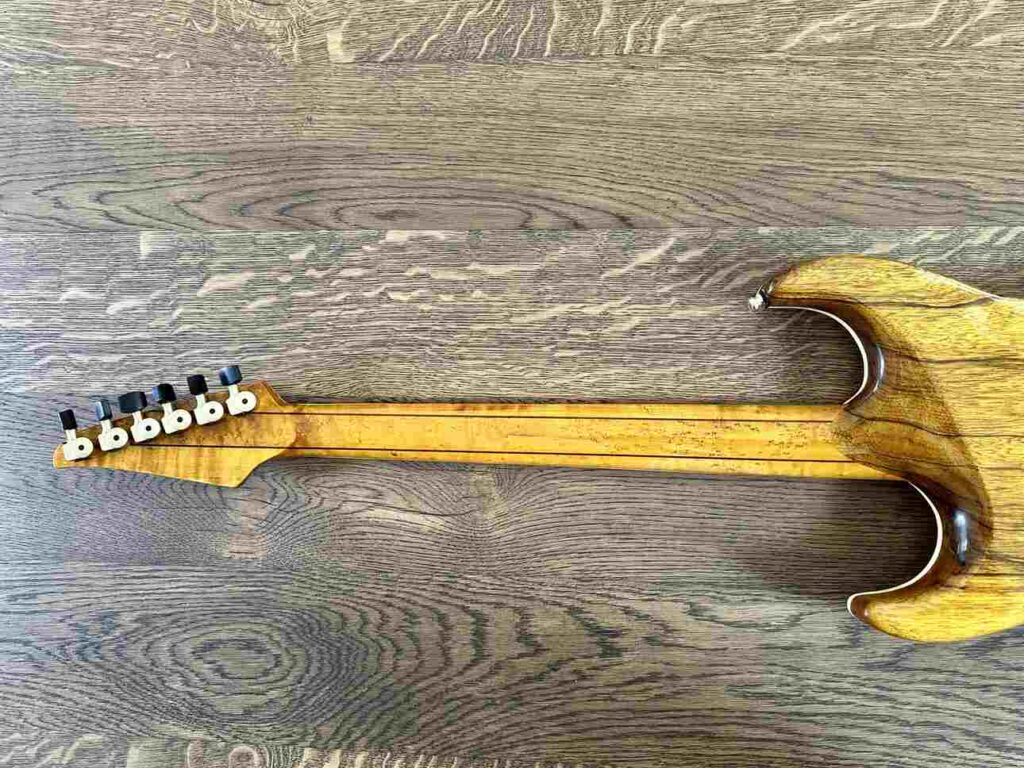
Impact of Neck Conditions on Playability
When a guitar neck warps or twists, it can affect the sound, the ease of playing, and the long-term use of your axe. Even minor changes can lead to significant challenges.
Influence on Guitar Tone and Intonation
Twisting of your guitar neck can negatively impact tone. The strings no longer run parallel to the neck, causing uneven vibration.
This leads to intonation issues, and notes can sound out of tune, even if the strings are correctly tuned. You find it difficult to keep your guitar in tune across the fretboard.
Effects on Playing Technique
A twisted neck makes it difficult to apply consistent technique. The action (height of the strings from the neck) becomes irregular. This might cause certain frets to buzz or mute strings.
Inconsistency in string height and tension can make your playing more difficult. Bending, sliding, and hammer-ons can become less reliable and more strenuous.
Long-Term Playability Concerns
Over time, a twisted neck can cause permanent damage to your guitar. The stress on the neck and body joints may lead to cracks or breaks. You could experience consistent playability issues that are expensive to repair.
So, regular check-ups and adjustments should be made to prevent this.
Preventative Measures and Maintenance
Proper Storage and Care
Store your guitar in a climate-controlled environment. Extreme temperatures and humidity changes can cause the wood to warp.
Use a hard-shell case to protect your guitar from physical damage. It will also help regulate its environment. Avoid leaning your guitar against walls or leaving it on stands for long periods.
Keep your guitar away from direct sunlight. UV rays can damage the finish and dry out the wood.
Aim for humidity levels around 45-55 percent. A guitar humidifier can maintain these levels.
Remember to clean your guitar regularly to remove dirt and oils that can weaken the wood.
Regular Maintenance by Professionals
A luthier or guitar tech can spot issues that you might miss. They can perform maintenance tasks like truss rod adjustments and fret leveling.
Having your guitar checked at least once a year is probably a good idea.
Luthiers can also check for any beginning signs of neck twisting and correct minor issues.
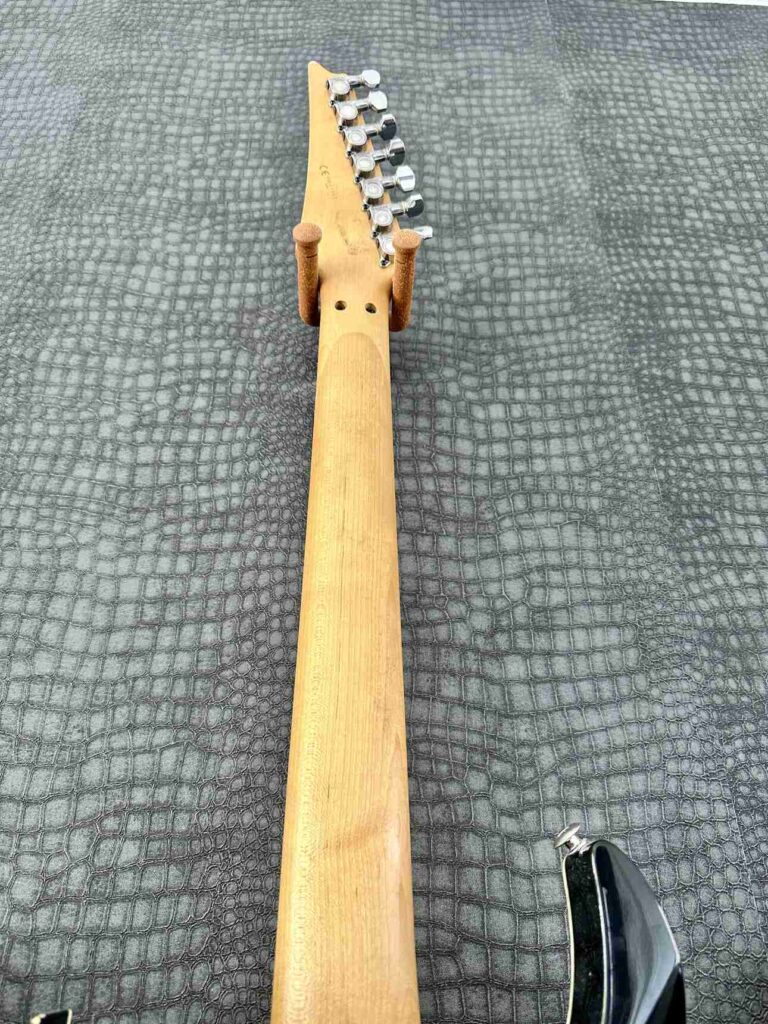
DIY Adjustments and When to Perform Them
You can do some basic adjustments yourself. For example, you can adjust the truss rod to correct minor neck bends. Turn the truss rod nut in small increments and check the neck frequently. Be careful not to over-tighten, as this can cause damage.
Only attempt adjustments if you’re comfortable with them. If the neck appears to twist, seek professional help. Regular string changes and cleaning can also maintain your guitar’s setup and performance.
When in doubt, consult a professional. It’s better to be cautious with such adjustments to preserve the health of your guitar.
Repairing a Twisted Guitar Neck
When to Seek Professional Help
If your guitar neck shows severe twisting, it’s time to consult a pro. Extreme twists can affect playability and sound quality. Look out for uneven fret wear and buzzing in certain spots.
With some know-how, you can fix minor issues at home. Still, significant problems call for specialized tools and skills.
Professionals have access to tools like dial indicators and neck jigs. These help in aligning the neck.
Common Repair Techniques
Some common repair techniques include adjusting the truss rod. Most guitars have adjustable truss rods that can straighten minor twists. Turn it slowly to avoid damage.
Another common technique is fret leveling. This method involves filing the tops of the frets to make them even. If the twist is minor, you can also use a fret rocker.
This tool checks the level of the frets across the neck. Hydration techniques can sometimes fix small twists.
Frequently Asked Questions
Are there consequences of playing with a twisted guitar neck?
Yes, playing with a twisted neck can cause issues. It can make your guitar harder to play and affect the tuning. The strings might buzz, and some notes might not sound right. Over time, it could even cause more damage to your guitar.
What methods exist to correct a guitar neck that’s twisted?
Several methods can fix a twisted neck. One common method is adjusting the truss rod, a metal rod inside the neck. Another way is using heat and pressure to straighten the neck gradually. Sometimes, a luthier might suggest removing the neck and resetting it.
Can all warped guitar necks be fixed, and how?
Most twisted necks can be fixed, but not all. The ability to fix it depends on how bad the twist is. Small problems can usually be corrected with adjustments. Serious twists might need professional help. And sometimes, the neck might be beyond repair.
How do you identify a guitar neck that is not straight?
Look down the length of the neck from the headstock towards the body. The neck should appear straight. If it looks curved or twisted, it’s likely warped.
Playing problems, like buzzing strings or intonation issues, can also be signs. Use a straight edge or a string to check for gaps or differences in height.

